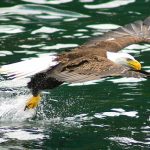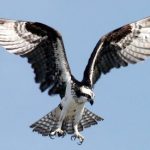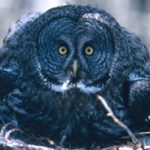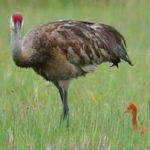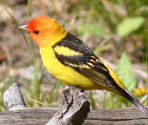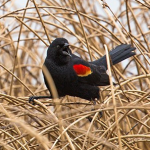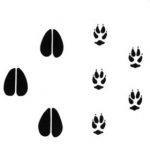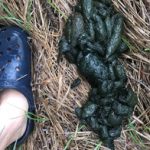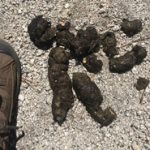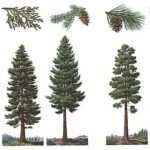![]()
An app for Grand Teton National Park info (best downloaded before you get there when you can find reliable internet) with info about visitor centers, historic places, natural features, and services throughout the park.
“Even without cellular service, the app will be able to share your location on the map and bring up all site content.”
https://www.nps.gov/grte/planyourvisit/nps-grand-teton-app.htm
Photos of over a hundred birds of Grand Teton National Park can be seen (and downloaded) at:
https://www.audubon.org/climate/national-parks/grand-teton-national-park
and the Yellowstone app:
https://www.nps.gov/yell/planyourvisit/app.htm
___________________________________
Download these instead of buying them at a visitor center ,
(well worth looking at in advance of the trip for info about animals and much more).
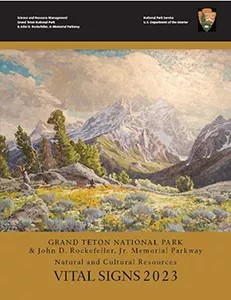
https://www.nps.gov/grte/learn/nature/vital-signs.htm
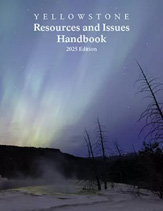
$38 or a free download:
https://www.nps.gov/yell/learn/resources-and-issues.htm
Greater Yellowstone’s Mountain Ungulates
A contrast in management histories and challenges
is a book about Bighorn sheep and Mountain goats
$45 or a free download:
https://irma.nps.gov/DataStore/DownloadFile/664586
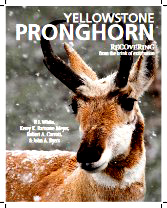 Yellowstone Pronghorn
Yellowstone Pronghorn
Recovering from the Brink of Extirpation
is a free download:
https://www.nps.gov/yell/learn/nature/upload/download_YELLOWSTONE-PRONGHORN-BOOK.pdf
Yellowstone Grizzly Bears: Ecology and Conservation of an Icon of Wildness
” . . . Bears can see in color, can hear in the ultrasonic range, and possess an incredible sense of smell.. . Heaviest Known Body Mass in the Greater Yellowstone Ecosystem: Adult male 715 pounds (324 kilograms); Adult female 436 pounds (198 kilograms)
Speed: 35 to 40 miles per hour (56 to 64 kilometers per hour)
Strength: 2.5 to 5 times greater than humans.
. . . 1944: Olaus Murie . . . experimented with electric cattle prods to teach bears to avoid campgrounds, but concluded “the bear learns to recognize the particular person or car that administers the shock or other punishment, and simply avoids that person or car in the future, but does not fear other persons or cars.”
$39.95 or a free download https://www.nps.gov/yell/learn/nature/upload/Yellowstone_Grizzlies_Web.pdf
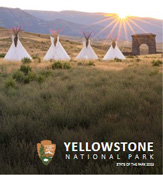
Yellowstone 2023 State of the Park report
https://www.nps.gov/yell/learn/management/upload/State-of-the-Park-2023-Web.pdf
Frequently asked questions about recent findings about earthquakes at various Yellowstone locations is at:
https://www.usgs.gov/observatories/yvo/news/yvo-2023-annual-report-has-hit-streets
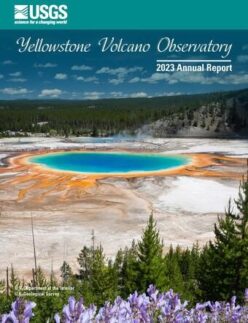
– – – – – – – – – – – – – – – – – – – – – – – – – – – – – – – – – – – – – – – – – –
Almost any local library can order a book for you from another library
almost anywhere in the United States.
(There is sometimes a small fee for this service.)
Before a trip to Grand Teton National park, borrow these from the library:
The Story Behind the Scenery has basic and detailed geology information. They wrote one for each of the major National Parks, including Grand Teton and Yellowstone.
Grand Teton National Park: – Where Lightning Walks is a large format photo album. Photographs by Pat O’Hara, Text by Tim McNulty
Grizzlies of Pilgrim Creek, by photographer Thomas D. Mangelsen and writer Todd Wilkinson
Wapiti Wilderness, by Margaret and Olaus Murie, pen-and-ink drawings by Olaus Murie, is their tale of living in the Tetons wilderness, where Olaus conducted studies of elk and other wildlife that in effect sometimes became a part of their household. It includes stories of pioneers, with detailed excerpts from the diaries and letters of Beaver Dick Leigh. If you know how to read a topographical map you can find Olaus’s “place of enchantment” where the ouzel is the “very spirit of the place.”
You can see home in Grand Teton. see: Grand Tetons sightseeing and search for Murie Ranch.
If you like it, also read Two In The Far North about their previous work and adventures in Alaska.
Gifts of the Crow How Perception, Emotion, and Thought Allow Smart Birds to Behave Like Humans.
For Everything There is a Season, a week by week chronicle of the sequence of events (blooming, birthing, weather, etc.) in the Grand Teton-Yellowstone Area by Frank C. Craighead, Jr.
A Guide to Exploring Grand Teton National Park (RNM Press) was written by Ranger naturalist(s) Olson and Bywater.
It has lots of info about birds, wildlife, trees and wildflowers as well as a basic map with trail distances.
At least chapter 5, The Song of the White Pelican, of The Abstract Wild by Jack Turner.
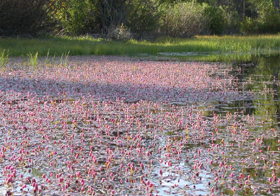

At Cascade Canyon wildflowers you’ll find pictures of Penstemon, Silky Phacelia, Western Serviceberry, Cascade Mountain Ash and Columbine in June and fall colors of Asters, Mountian Ash and Aspen in September.
Plants of the Rocky Mountains (Kershaw, MacKinnon, Pojar) has more pictures than most field guides, including spring/fall and or close ups and general pictures. The start of the wildflowers section has a collage, by color, of all the ones described with page numbers to find larger pictures and read details.
One favorite Rocky Mountains field guide to flowers, trees, fish, birds, mammals and more is The National Audubon Society Field Guide to the Rocky Mountain States.(Peter Alden) We also use Rocky Mountain Wildflowers (Mountaineers Books).
Our copy of A Guide to Field Identification – Birds of North America is well worn and we also use Field Guide to Birds, Western Region (Little, Brown), as well as the three volume Audubon Society Master Guide to Birding.
___________________________________
Grand Teton National Park birds has photos and details about the most common ones we can hope to see
including Bald Eagle, Red-winged Blackbird, Canada Geese, Clark’s Nutcracker, Golden Eagle, Great Blue Heron.Great Gray Owl, Harlequin duck, Loon, Magpie, Merganser, Northern Flicker (woodpecker), Osprey, Ouzel, Pelican, Peregrine Falcon, Ptarmigan, Raven, Sandhill Cranes, Steller’s Jays, Trumpeter Swan, Western Meadowlark and Western Tanager, with links to calls / songs from most of them to listen to.
and you can Download photos of over a hundred birds of Grand Teton National Park
https://www.audubon.org/climate/national-parks/grand-teton-national-park
___________________________________
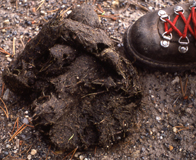 See also: animal sign comparisons
See also: animal sign comparisons
(how to use tracks and scat to distinguish species)
Please do not handle scat. Wolf scat, for example, can transmit tapeworm eggs to humans.
___________________________________
Many people think of trees the shape of the ones shown below as “pine” trees,
but only one of them is actually a pine tree and we see it in Yosemite rather than on the Grand Teton Trip. If you are interested in learning more, see tree identification in Grand Teton Park.
To print yourself a larger, more readable copy of three profile drawings
of the Teton Range with the names of peaks seen from these three views:
1) Highway 89, one mile south of Moose Junction
2) Teton Point turnout on Highway 89
3) from Jackson Lake Lodge
go to:
https://www.nps.gov/grte/learn/management/upload/profile.jpg
Teton Science School has many online articles of interest in the wildlife section:
https://www.tetonscience.org/can-moose-really-dive/
https://www.tetonscience.org/why-do-bull-elk-shed-their-antlers-each-year/
—————————————-
You can read about John Colter, Jackson Hole and more stories, including campfire tales of Jackson Hole (history) at:
at: http://www.nps.gov/parkhistory/parkhistories.htm#g
scroll down to Grand Teton.
http://www.npr.org/display_pages/features/feature_860015.html
How to ID Birds Learn some of the secrets of bird identification using silhouettes, posture, flight pattern, size and habitat, in addition to key field marks.
Where to Bird, Bird Guide, Gear Guide, Attracting Birds, Conservation Links
The International Wolf Center advances the survival of wolf populations by teaching about wolves, their relationship to wild lands and the human role in their future.

The diary of artist Thomas Moran is at:
http://www.nps.gov/yell/historyculture/thomasmoransdiary.htm
___________________________________
 Was that a black bear or a grizzly, a coyote or a wolf or a fox we just saw?
Was that a black bear or a grizzly, a coyote or a wolf or a fox we just saw?

Rocky Mountain mammal size comparisons has photos and comparisons of beavers, squirrels, pika, marmot, elk, moose, bison, fox, coyote, wolf, golden-mantled ground squirrel, chipmunk, Red Squirrel (also known as) Chickaree, Unita Ground squirrels, bobcat, lynx, mountain lion (cougar), pine marten, mountain goats, bighorn sheep, pronghorn, grizzly and black bears, tundra swan, trumpeter swan, adult and juvenile Bald Eagles.
See also Yellowstone
For info about the next Outdoor Club Grand Tetons trip go to Grand Tetons
Grand Tetons trip pages index has brief descriptions of most of the pages about this trip.
Backpacking in Grand Teton National park has maps and details about getting permits.
Photo below of Oxbow Bend, and the mist we typically kayak out into in the morning, by Fred Hanselmann
http://www.hanselmannphotography.com/Pictures_of_the_tetons.html

